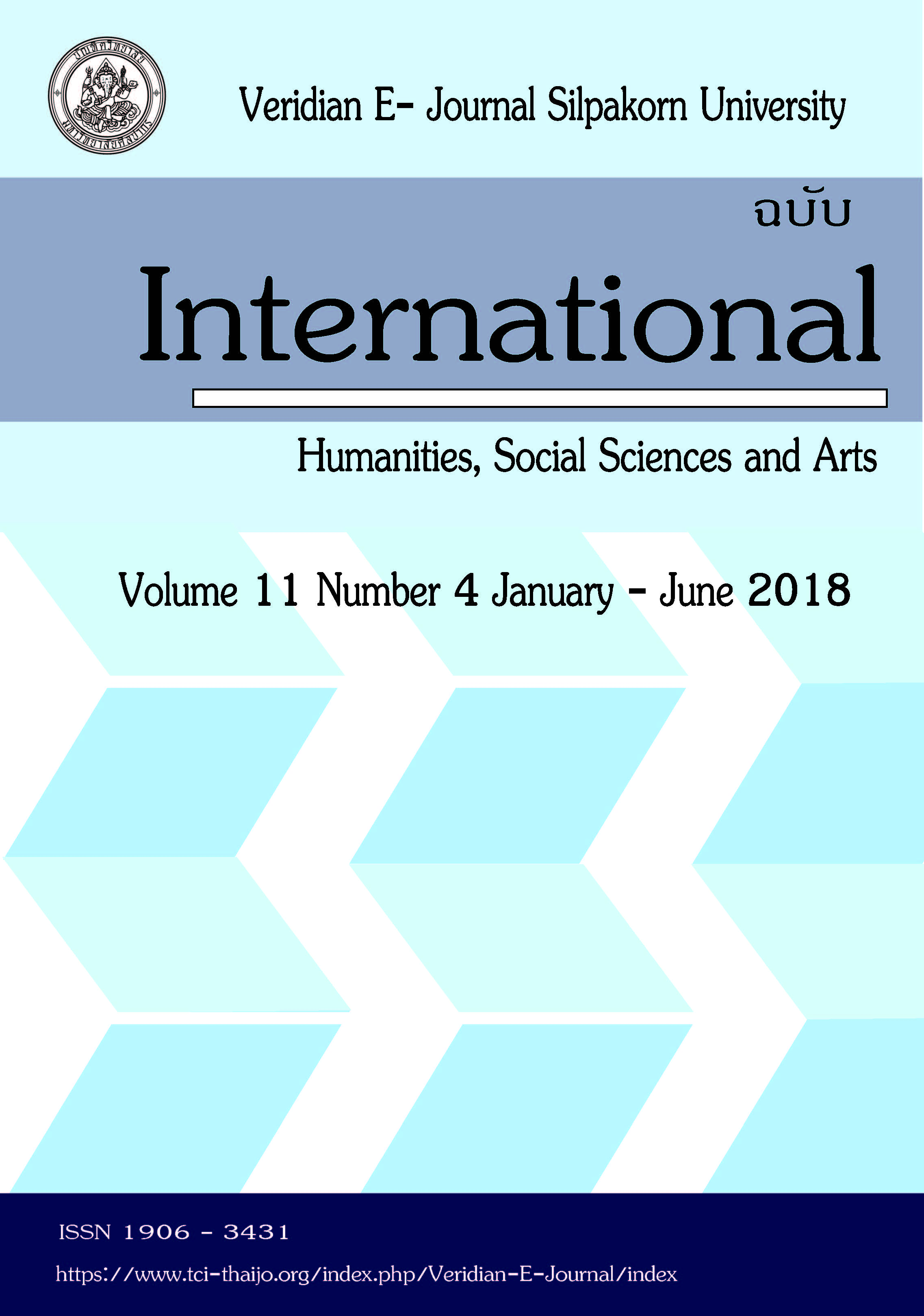A Development of Knitted Fabric from Thai Silk Waste for Creative Fashion and Lifestyle Products
Main Article Content
Abstract
The aim of this research was develop a knitted fabric from Thai silk waste in order to for creative fashion and lifestyle products. The methodology of this research was related to “practice to design”. It consisted of two parts, the first part involved the collecting of information related to Thai silk waste and its benefits. The second part involved experimenting so as to determine a suitable method and related equipment for the production of knitted fabric through a craft and industrial process. The process required fiber preparation, spinning, dying, knitting, fabric property testing and creating a finished fashion and lifestyle products.
The results of study show that the solid waste produced from Thai silk can be classified into three types: Incomplete cocoons, broken silk yarn and silk fabric waste. Generally, this waste has been re-used in manufacturing for items such as fashion accessories and decorative products. In terms of the experiment, the results suggest fiber preparation through the craft process was superior to the industrial process. Yarn spinning was carried out by using a traditional Thai hand spinner to be single yarn, ply yarn, core yarn. This process was able to created unlimited forms, textures and colors. Moreover, dyeing different types of silk waste, silk hankies, roving and yarn produced a variety of colors. In addition, shade and value was done by mordant. The knitting process was accomplished through hand knitting and a domestic knitting machine. The process produced basic and applied fabric structures and was able to create texture and form with thick, thin, three-dimensional, complex and continual structures. The character of fabric was shown to be shiny, sticky, lightweight and flexible. The results obtained from this research can be beneficial and used as a guideline for producing artistic creations and to silk waste. In addition, the information gained from the craft process can be utilized by villagers for small scale production and also by the Thai silk industry. The results from this study can be aid the recognition of the value of waste products from their business and thus assist in the reduction of environment damage.
